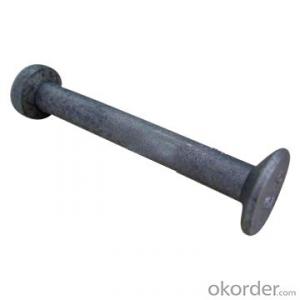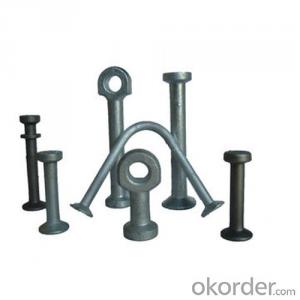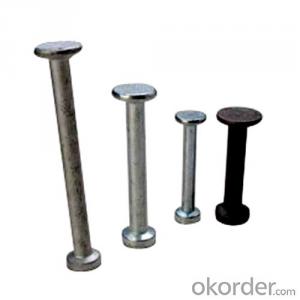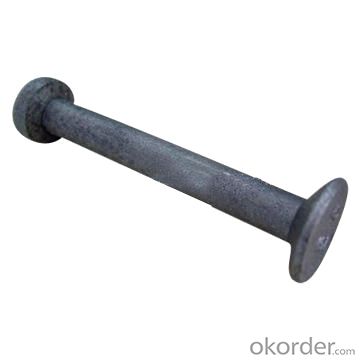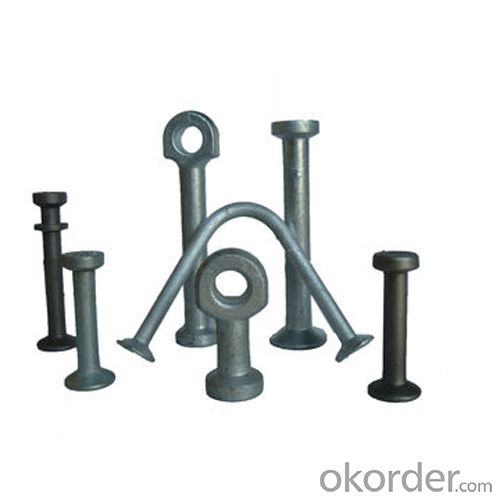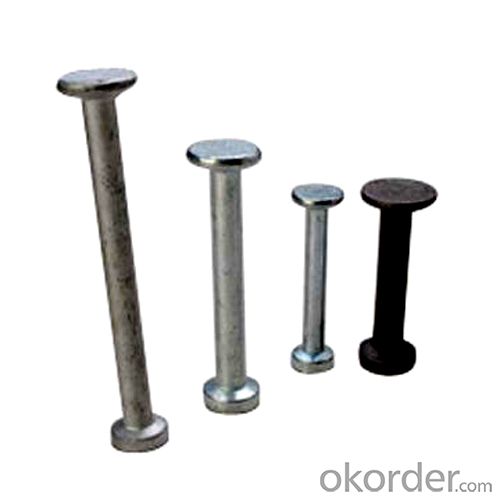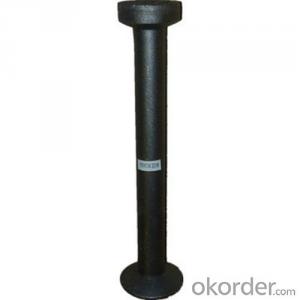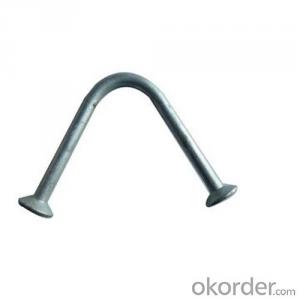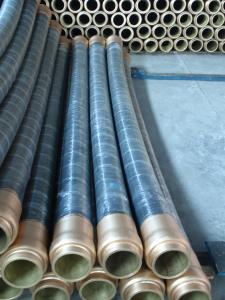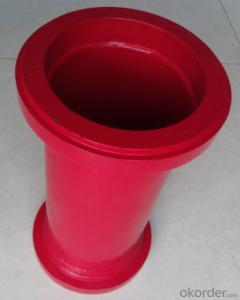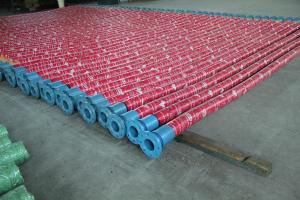Lifting Anchor Forged Straight Type Long Design VII
- Loading Port:
- Tianjin
- Payment Terms:
- TT OR LC
- Min Order Qty:
- 100 pc
- Supply Capability:
- 10000 pc/month
OKorder Service Pledge
OKorder Financial Service
You Might Also Like
1. Specification:
Material: Carbon Steel, Forged
Finish: Self Colored, or Galvanized
Packaging: carton, then on pallets, or as customers' requirements
Stocks: we have stocks for regular sizes
Warning: never exceed working load limit
2. Products available:
Swift lift lifting eyes are used with the swift lift anchors to lift, handle and place precast concrete elements
3. Primary competitive advantages:
1. More than 10 years 4 years focus on building material manufacturing
Prompt delivery lead time within 25 days after confirming order
2. Eathu's products are enhanced by the factory QA and quality control checks during the production, if necessary each order can be send out with a certificate referring back to test
3. OEM/ODM capability: more then 10 years experience
Price
Product Features
Product Performance
Prompt Delivery
Quality Approvals
4.Packaging and delivery:
Packaging details: goods packed in cartons and then on the pallet
Delivery detail: within 25 days after getting payment
Market:
Eastern Europe
Mid East/Africa
North America
FAQ:
Q1: How long about delivery time Concrete Lifting anchors ?
A1: The delivery time will be very short, normally we keep the raw materials for old customers and sometime we also keep stock products to
make sure delivery time in any emergency cases.
Q2: How do we guarantee the quality of our Concrete lifting anchors?
A2: We have established an advanced quality management system which conducts strict quality tests at every step, from raw materials to the final product. At the same time, we provide extensive follow-up service assurances as required.
Q3: How soon can we receive the product after purchase?
A3: Within three days of placing an order, we will book the vessel for goods. The specific shipping date is dependent upon international and government factors, but is typically 7 to 30 workdays.
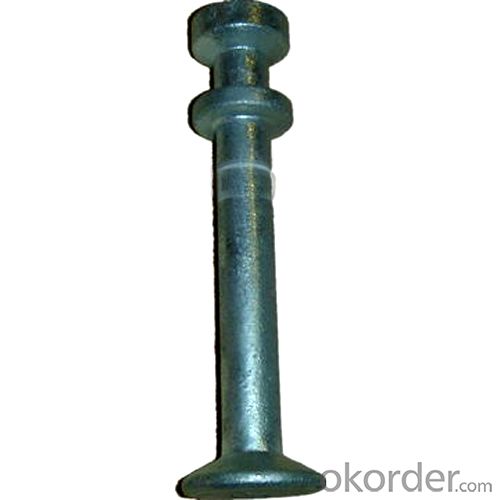
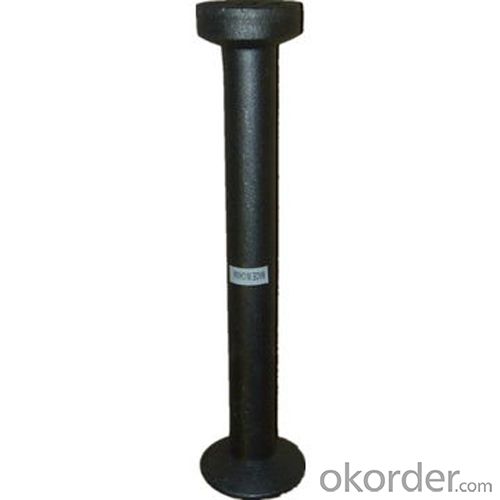
- Q: How to operate the concrete pump?
- Start the position, adjust the handle, hand wheel, control lever, cock and so on. They should be in the correct position. The hydraulic system should be normal without leakage
- Q: How often should concrete pump pistons be replaced?
- The frequency at which concrete pump pistons should be replaced depends on various factors such as the usage, maintenance, and the quality of the pistons. In general, it is recommended to inspect the pistons regularly for signs of wear and tear, including cracks, pitting, or scoring. If any of these signs are observed, it is advisable to replace the pistons immediately to prevent potential failures or leaks. Concrete pump pistons typically have a lifespan ranging from 25,000 to 75,000 cubic yards of concrete pumped, but this can vary based on the specific conditions and operating practices. For instance, if the concrete being pumped contains abrasive materials or if the pump is used intensively or under harsh conditions, the pistons may wear out more quickly. Additionally, proper maintenance practices can extend the lifespan of the pistons. This includes regular cleaning and lubrication, keeping the pump well-maintained, and ensuring that the pistons are properly aligned and not subjected to excessive pressure or stress. Ultimately, it is crucial to monitor the condition of the pistons closely and consult the manufacturer's recommendations or seek advice from a professional to determine the appropriate replacement interval for the specific concrete pump being used.
- Q: What are the indications of a damaged concrete pump boom?
- There are multiple signs that can indicate a damaged concrete pump boom. These signs encompass: 1. Physical damage that is visible: One of the most apparent indications of a damaged concrete pump boom is the presence of visible physical damage. This can manifest as cracks, dents, or deformities in the structure of the boom. It is crucial to take any signs of structural damage seriously as they have the potential to compromise the integrity of the boom. 2. Leaks: Another sign of a damaged boom is the occurrence of leaks. If you observe hydraulic fluid or water leaking from the boom, it could be an indication of damage to the hose or fitting. Leaks not only impact the pump's performance but also pose a safety hazard to the operator and those in the vicinity of the equipment. 3. Misalignment: A damaged boom might also display issues with misalignment. If the boom is not straight or appears to be bent at an unusual angle, it could signify damage. Misalignment can negatively affect the accuracy and efficiency of concrete placement, which could result in uneven or improper pouring. 4. Unusual noises: Unusual or excessive noises during operation can be a sign of a damaged boom. Sounds such as rattling, grinding, or squealing may indicate loose or worn-out components like pins, bushings, or bearings. It is important not to ignore these noises as they could worsen if not promptly addressed. 5. Decreased performance: A damaged boom can also lead to reduced performance. If you notice a decrease in pumping capacity or encounter difficulties in controlling the movement of the boom, it could signify damage. Poor performance can stem from various issues, including problems with the hydraulic system, structural damage, or worn-out parts. To conclude, regular inspections and maintenance of concrete pump booms are vital in order to identify any signs of damage. Addressing these issues promptly is essential to ensure the safety of operators, prevent further damage, and uphold the efficiency and performance of the equipment.
- Q: What is the purpose of a concrete pump hydraulic accumulator bladder?
- The purpose of a concrete pump hydraulic accumulator bladder is to store and release hydraulic energy within a concrete pump system. The bladder acts as a flexible barrier between the hydraulic fluid and a gas or air chamber. When hydraulic fluid is pumped into the bladder, it compresses the gas or air inside, storing potential energy. This energy can then be released when needed to power the hydraulic system, providing a surge of pressure and flow to ensure efficient and controlled movement of the concrete. The hydraulic accumulator bladder serves several important functions in a concrete pump system. Firstly, it helps to smooth out and regulate the flow of hydraulic fluid, reducing pressure fluctuations and ensuring a steady and consistent supply of power to the pump. This helps to prevent damage to the pump components and ensures a more reliable and efficient operation. Additionally, the bladder helps to compensate for variations in demand. As the concrete pump operates, there may be times when the demand for hydraulic power exceeds the supply. In such cases, the bladder can release the stored energy to meet the increased demand, providing a temporary boost to the hydraulic system. This helps to maintain a consistent and continuous flow of concrete, even during peak demand periods. Furthermore, the hydraulic accumulator bladder can also act as a safety device. In the event of a sudden pressure surge or spike in the hydraulic system, the bladder can absorb and dampen the excess pressure, preventing damage to the pump or other components. This helps to protect the equipment and ensure the safety of the operators. In summary, the purpose of a concrete pump hydraulic accumulator bladder is to store and release hydraulic energy, smooth out and regulate hydraulic fluid flow, compensate for variations in demand, and act as a safety device. By performing these functions, the bladder helps to optimize the performance and efficiency of the concrete pump system, ensuring a reliable and controlled movement of concrete.
- Q: How can one determine the correct voltage and current rating for electrical components in concrete pump spare parts?
- Several factors must be considered when determining the appropriate voltage and current rating for electrical components in concrete pump spare parts. The first step is to consult the manufacturer's specifications and documentation for both the concrete pump and its spare parts. These documents typically provide detailed information on the voltage and current requirements for each electrical component. It is important to closely follow these guidelines to ensure that the components are operated within their intended parameters. Next, it is crucial to have a thorough understanding of the electrical system and its requirements. This involves analyzing the power supply available at the site where the concrete pump will be used. Factors such as the voltage level (e.g., 110V, 220V, 440V) and frequency (e.g., 50Hz, 60Hz) of the electrical supply must be taken into account. Additionally, the maximum current capacity of the electrical system should be considered to avoid overloading. Furthermore, it is advisable to assess the specific application and operating conditions of the concrete pump. Different components may have varying voltage and current requirements depending on their function and the environment in which they are used. For example, components installed outdoors may require higher voltage ratings to withstand harsh weather conditions. Lastly, seeking assistance from qualified electricians or engineers is highly recommended. They have the expertise and knowledge to accurately determine the voltage and current ratings for electrical components in concrete pump spare parts. Their experience allows them to consider various factors, including safety regulations, compatibility with the existing electrical system, and any specific requirements from the concrete pump manufacturer. By considering the manufacturer's specifications, understanding the electrical system, evaluating the application and operating conditions, and seeking professional advice, one can effectively determine the appropriate voltage and current rating for electrical components in concrete pump spare parts.
- Q: How much do concrete pump spare parts typically cost?
- Several factors can influence the price of concrete pump spare parts, including the brand, type of part, and supplier. The cost can range from a few hundred dollars to several thousand dollars. Basic components like pistons, seals, and wear plates generally have lower prices, while more intricate parts like hydraulic cylinders or control boards can be more costly. Furthermore, the price can also be influenced by the quality and durability of the spare part. It is recommended to compare prices from various suppliers and take into account factors such as warranty and customer reviews before making a purchase.
- Q: What are the advantages of using tungsten carbide components in concrete pump spare parts?
- There are several advantages of using tungsten carbide components in concrete pump spare parts. Firstly, tungsten carbide is an extremely hard and durable material, which ensures longer lifespan and increased wear resistance of the components. This means reduced maintenance and replacement costs in the long run. Additionally, tungsten carbide has excellent corrosion resistance, making it suitable for use in harsh and corrosive environments commonly found in concrete pumping applications. Furthermore, tungsten carbide components offer superior strength and toughness, enabling them to withstand high-pressure and heavy-duty operations without compromising performance. Overall, the use of tungsten carbide in concrete pump spare parts leads to improved efficiency, reliability, and cost-effectiveness in concrete pumping operations.
- Q: Can I get spare parts for concrete pump wear plates and cutting rings?
- Absolutely, spare parts for concrete pump wear plates and cutting rings are readily available. These components are crucial for the flawless functioning and optimal performance of a concrete pump. Numerous manufacturers and suppliers specialize in offering spare parts exclusively for concrete pumps, encompassing wear plates and cutting rings. You have the option to directly approach these suppliers or manufacturers to inquire about the availability and pricing of these spare parts. Moreover, there are also online platforms and marketplaces where an extensive assortment of spare parts for various concrete pump models can be found. It is always advisable to ensure the purchase of genuine and top-notch spare parts to ensure the durability and effectiveness of your concrete pump.
- Q: Can concrete pump spare parts be repaired on-site, or should they be sent to a specialized repair facility?
- Concrete pump spare parts can be repaired on-site in certain cases, while in others it may be necessary to send them to a specialized repair facility. The decision of whether to repair on-site or send for specialized repair depends on the nature and complexity of the repair required, the availability of skilled technicians and equipment, and the time constraints of the project. In many cases, minor repairs or replacements of simple components can be carried out on-site. These may include tasks such as replacing hoses, seals, or filters, which can be done quickly and easily with basic tools and equipment. These types of repairs can often be performed by the operators or maintenance personnel themselves, without the need for specialized technicians. However, for more complex repairs or replacements, it is advisable to send the spare parts to a specialized repair facility. This is particularly true for critical components such as hydraulic cylinders, valves, or control systems, which require specialized knowledge and expertise to repair properly. Specialized repair facilities have trained technicians who specialize in specific equipment and are equipped with the necessary tools and resources to diagnose and fix complex issues. Moreover, specialized repair facilities often have access to a wider range of spare parts and can source genuine parts from the original manufacturer. This ensures that the repaired spare parts are of high quality and compatible with the specific make and model of the concrete pump. Additionally, these facilities may offer warranties on their repairs, providing peace of mind to the equipment owners. Ultimately, the decision to repair on-site or send for specialized repair depends on the specific situation and resources available. It is important to assess the complexity of the repair, the availability of skilled technicians, and the potential impact on the project timeline before deciding on the most appropriate course of action.
- Q: How often should hopper grate pins be inspected or replaced in a concrete pump?
- Hopper grate pins in a concrete pump should be inspected regularly to ensure proper functioning and prevent any potential issues. As a general guideline, it is recommended to inspect hopper grate pins at least once a month or after every 200 hours of operation, whichever comes first. However, the frequency of inspection may vary depending on the specific conditions and usage of the concrete pump. During the inspection, it is important to check for any signs of wear, damage, or deformation in the hopper grate pins. If any issues are identified, they should be promptly addressed to avoid further damage and ensure safe and efficient operation of the concrete pump. The replacement of hopper grate pins should be done as soon as they show significant signs of wear or damage that could compromise their functionality. It is essential to follow the manufacturer's guidelines and recommendations when replacing hopper grate pins, as they may vary depending on the specific model and design of the concrete pump. Regular inspections and timely replacements of hopper grate pins contribute to the longevity and reliability of the concrete pump, minimizing the risk of unexpected breakdowns and ensuring optimal performance.
Send your message to us
Lifting Anchor Forged Straight Type Long Design VII
- Loading Port:
- Tianjin
- Payment Terms:
- TT OR LC
- Min Order Qty:
- 100 pc
- Supply Capability:
- 10000 pc/month
OKorder Service Pledge
OKorder Financial Service
Similar products
Hot products
Hot Searches
Related keywords
